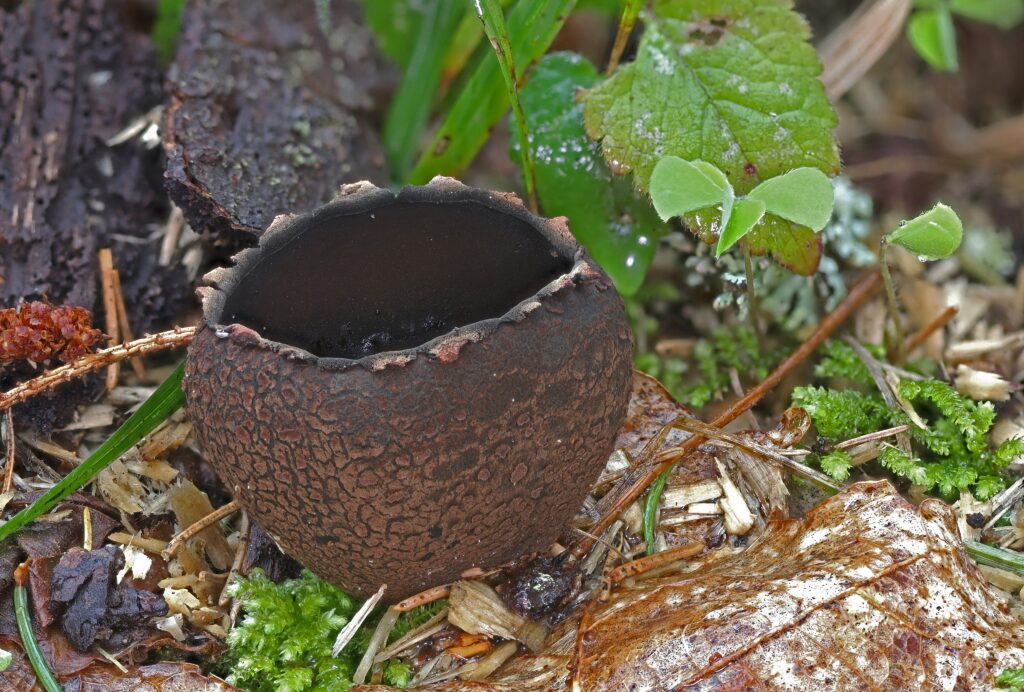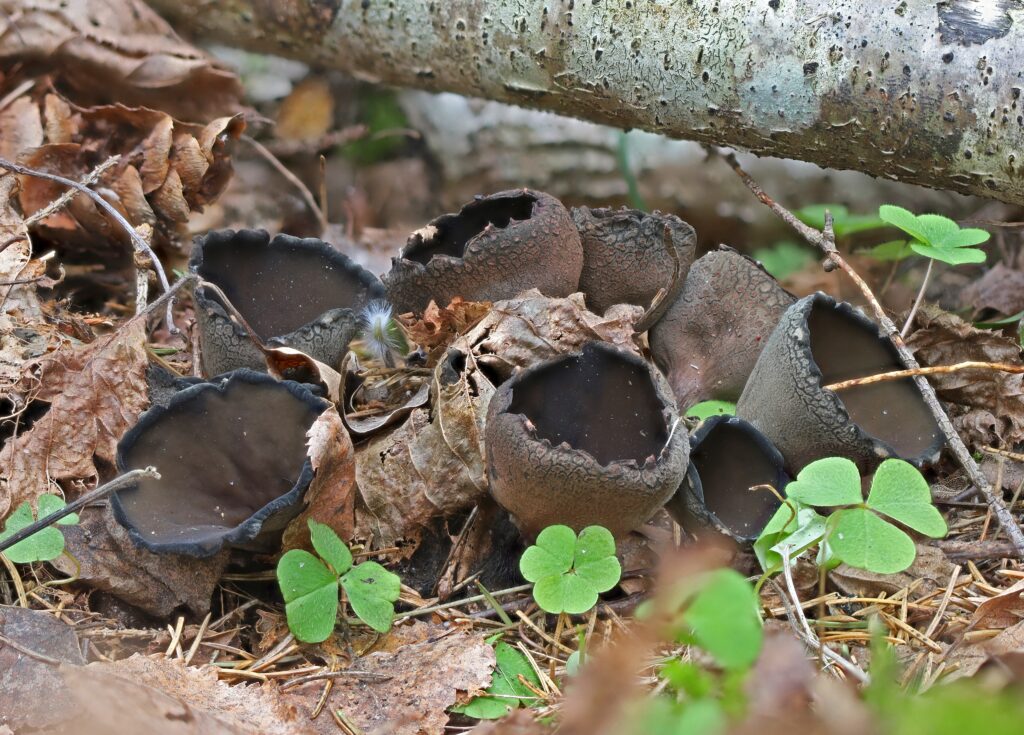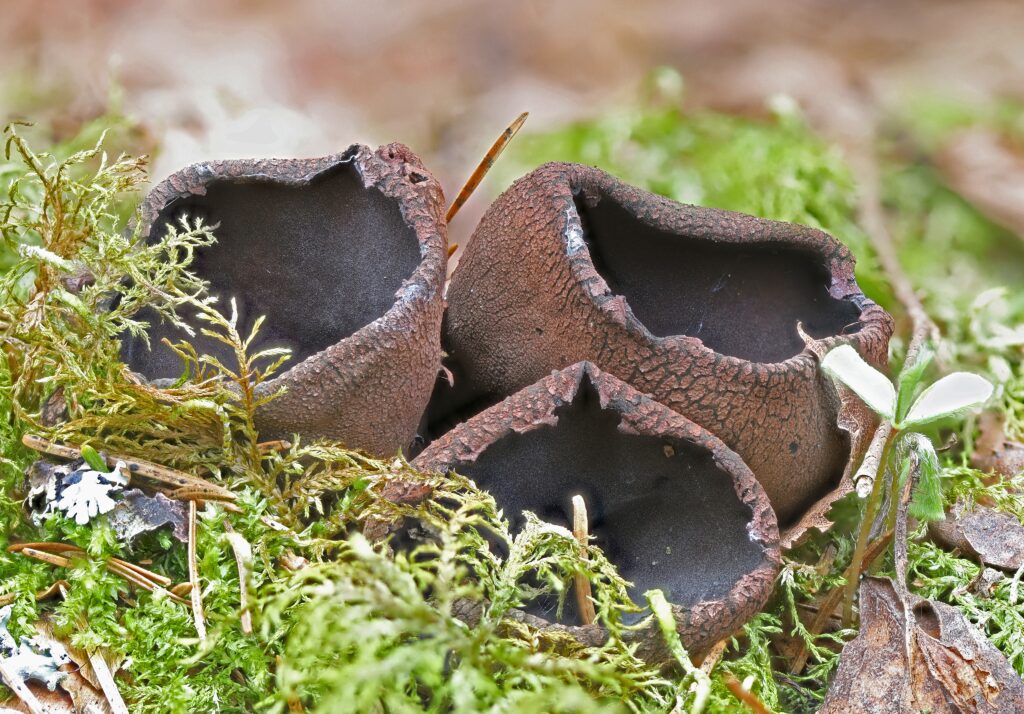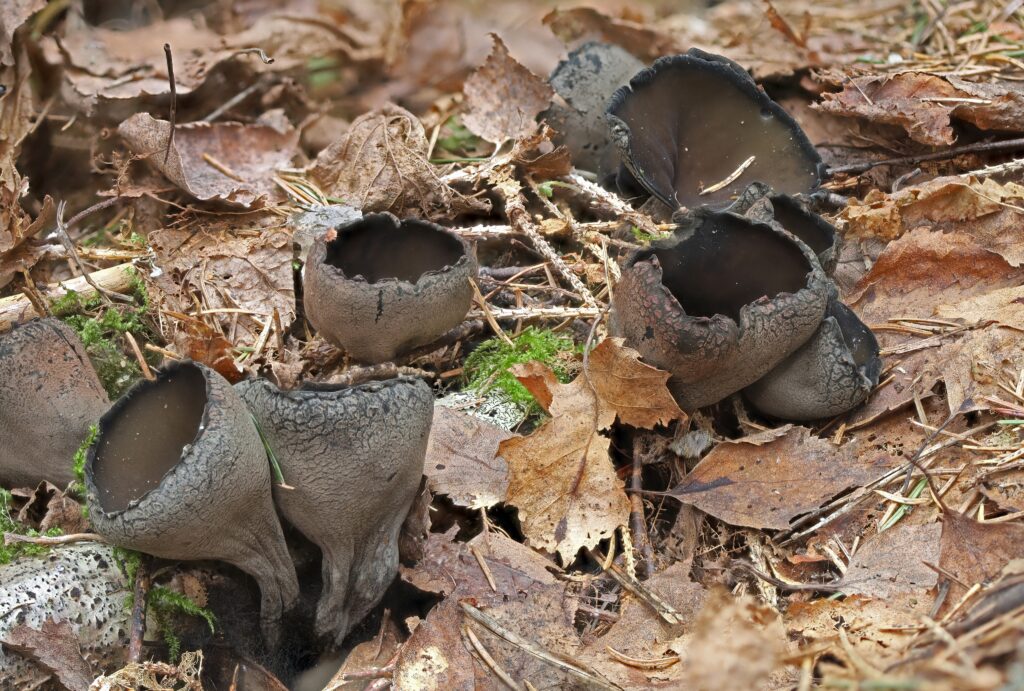A new location of an extremely rare and mysterious mushroom has been found in Neris Regional Park.
Have you ever seen a crater? Most of the time, we understand a crater as a funnel or cup-shaped depression of volcanoes, but would you believe that its reduced form can also be seen in Lithuania, only not in the form of rocks, but in the form of a mushroom! This is the crater mushroom (Urmula craterium), one of the earliest and strangest mushrooms in Lithuania. At the moment, they are just growing, so I am happy that Sauli Pupininkas, the guide of the Neries Regional Park, and the young friends of the park were lucky enough to discover another site of this rare, protected mushroom, which is listed in the Lithuanian Red Book!
The fruiting bodies of the mushroom have an unusual shape, are about 2-8 cm high and 1-4 cm in diameter, at first they are closed or spherical, then when the top opens, they become deep cups or funnel-shaped. The surface is black-brown, brownish in color, felted, the edges are cracked. Although it looks like a volcano about to erupt, you won't find lava inside, so don't be afraid, you won't burn your fingers, but under the right conditions, blowing into this crater will give rise to a gray cloud of spores that reproduce this mushroom like smoldering smoke.
Where can you find or try to find this rare mushroom? Crater gorse forms in early spring, growing on rotting hardwood and forest floor. It usually develops on the fallen branches and stems of hazel, alder, birch and oak trees, lying in moderately moist fertile soil. Typical habitats for this mushroom are mature and misty spruce or oak groves with old hazel trees, in moist areas of hornbills and slopes, near streams. Grows both singly and in large groups, sometimes reaching up to 100 units in one place! Currently, only about 50 localities of this mushroom are known in Lithuania.
How can this rare mushroom be protected? The main threats to the survival of the cratered warbler and its habitats are the decline and fragmentation of mature forests, especially spruce and oak mixed with hazel, due to economic activities. Changes in the hydrological regime and drying of the soil also have a negative impact on the condition of this mushroom. "In order to protect the habitats of these mushrooms, one of the most effective measures is the banning of deforestation in the habitats of these mushrooms, as well as the preservation of hazel trees growing in the tracks and maintaining the integrity of the soil. No less important thing for the preservation of this species is people's awareness, so we invite all friends of the park to report them to the park staff if they notice these strange creatures, may the number of craters increase!" - Justyna Barščevska, ecologist of the Directorate of Dzūkija-Suvalkija Protected Areas, invites everyone who finds them to contribute to the protection of the cratered warbler.





